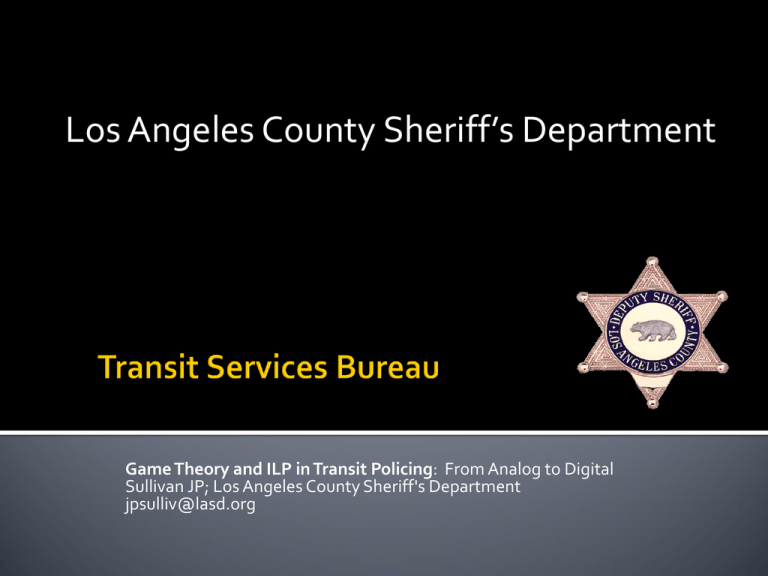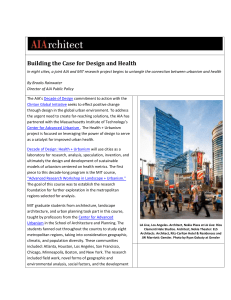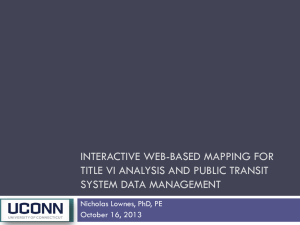Lt. John Sullivan – Los Angeles County Sheriff`s Department
advertisement

Los Angeles County Sheriff’s Department Game Theory and ILP in Transit Policing: From Analog to Digital Sullivan JP; Los Angeles County Sheriff's Department jpsulliv@lasd.org Abstract: Policing urban mass transit systems (bus and rail) requires an understanding of threats, vulnerability, and criticality (impact) on the system and people. A range of hazards can potentially cause harm. These include crime, disorder, and terrorism. We are currently testing game theoretic modeling of a range of actors (police, transit personnel, passengers, and criminals) on the transit system. Balancing security, accessibility and legal concerns/liberty interests are key issues. Collaborative research between the University of Southern California, Center for Risk and Economic Analysis of Terrorism Events (CREATE) and the Los Angeles County Sheriff's Department, Transit Services Bureau (TSB) on the Los Angeles Metro system toward randomization and optimization of Intelligence-Led Policing (ILP): dynamic deployment and analysis for fare enforcement, disorder, crime, and terrorism will be highlighted. METRO operates the third largest public transportation system in the US by ridership with a 1,433 sq. mi (3,711 km2) operating area 2,000 peak hour buses on the street any given business day Metro also designed, built and now operates 79.1 miles (127.3 km) of urban rail service The MTA has 9,200 employees Fare Enforcement Serious Crime Terrorism Intelligence-Led Policing (ILP) Must Balance Access, Ease of Mobility with Security and civil liberties Large Complex terrain and population Randomize and Optimize Deployments/Interventions ARMOR-TRUSTS (Assistant for Randomized Monitoring Over Routes- Tactical Randomization for Security in Transit Systems) Pilot project with USC (CREATE) Randomization of fare operations, directed patrol and special mission unit deployments; i.e. passenger screening & surge staffing Uses game theory advanced quantitative statistics (econometrics) Requires immersion of researchers and practitioner participation in practical field tests Fare Evasion as baseline Developed schedules and then Smartphone app for dynamic deployment Counterterrorism: surge staffing 10 NAIs on Metro Cover for national & regional threat 25% & 50% respectively Resource typed SMUs TTX & FSE to test deployment Crime (hotspots/ILP) next Move from analog to digital Distributed apps for Intelligence-Led Policing and Intelligence Preparation for Operations Edge devices for all (smartphones/tablets) “App of Apps” Questions? Lieutenant John P. Sullivan Los Angeles County Sheriff’s Department Homeland Security Division Transit Services Bureau Headquarters (323) 997-1089 jpsulliv@lasd.org Edge devices: Need to work on surface and in subway Requires Wireless Connectivity Must communicate with Metro and multiple public safety agencies (including all TSB and LASD) Must provide reliable dynamic deployment and mission planning capability Must be scalable











